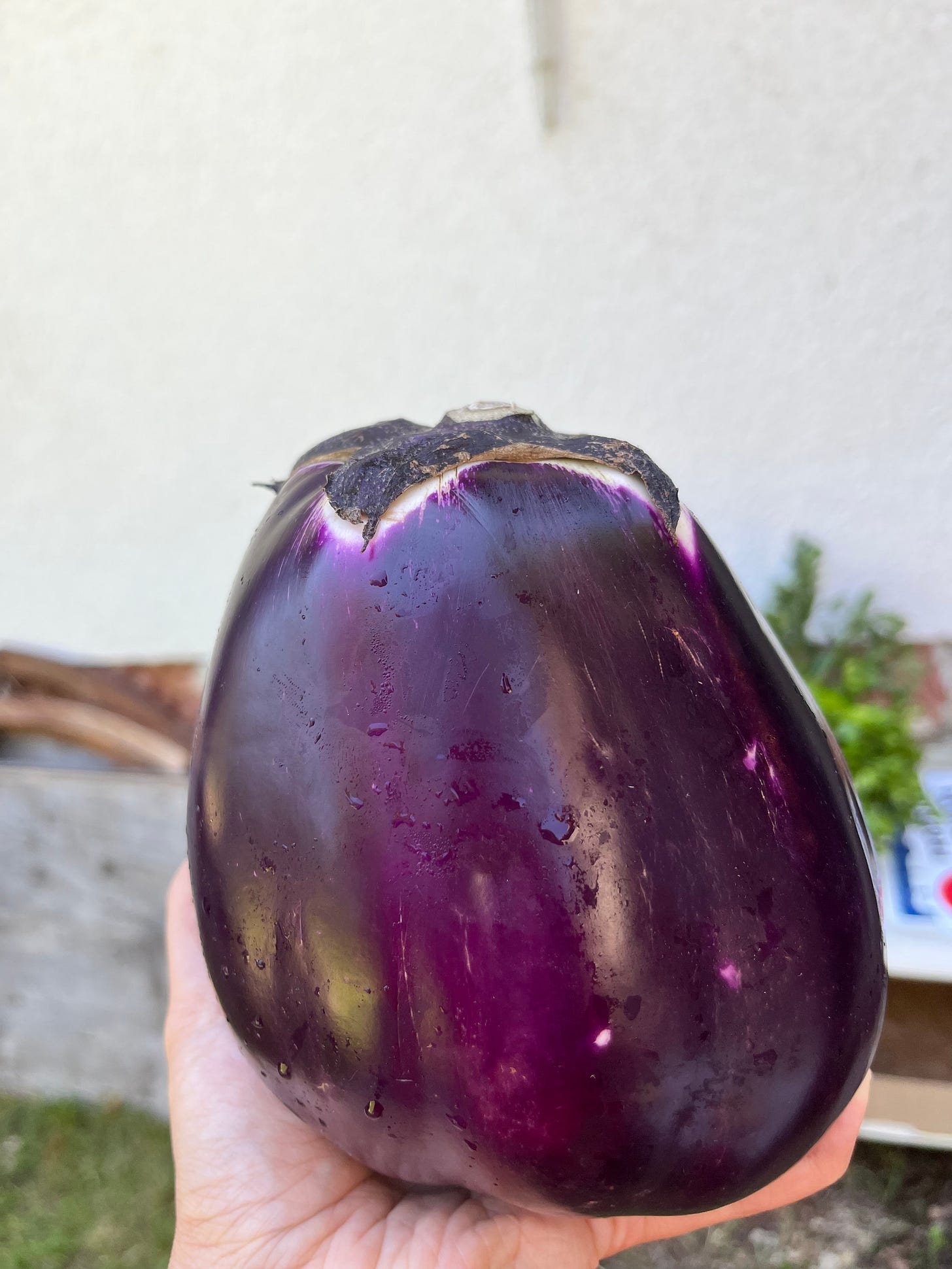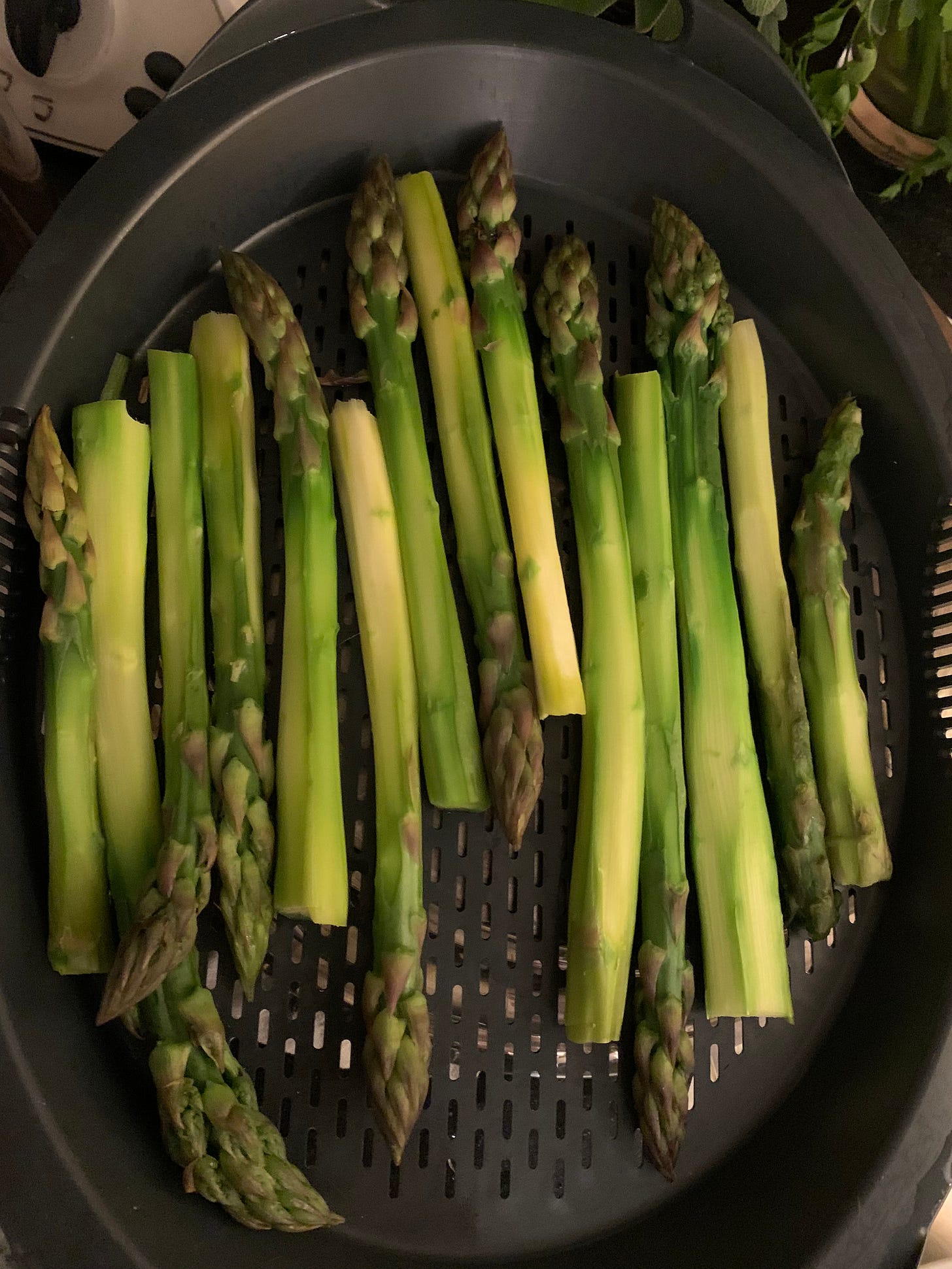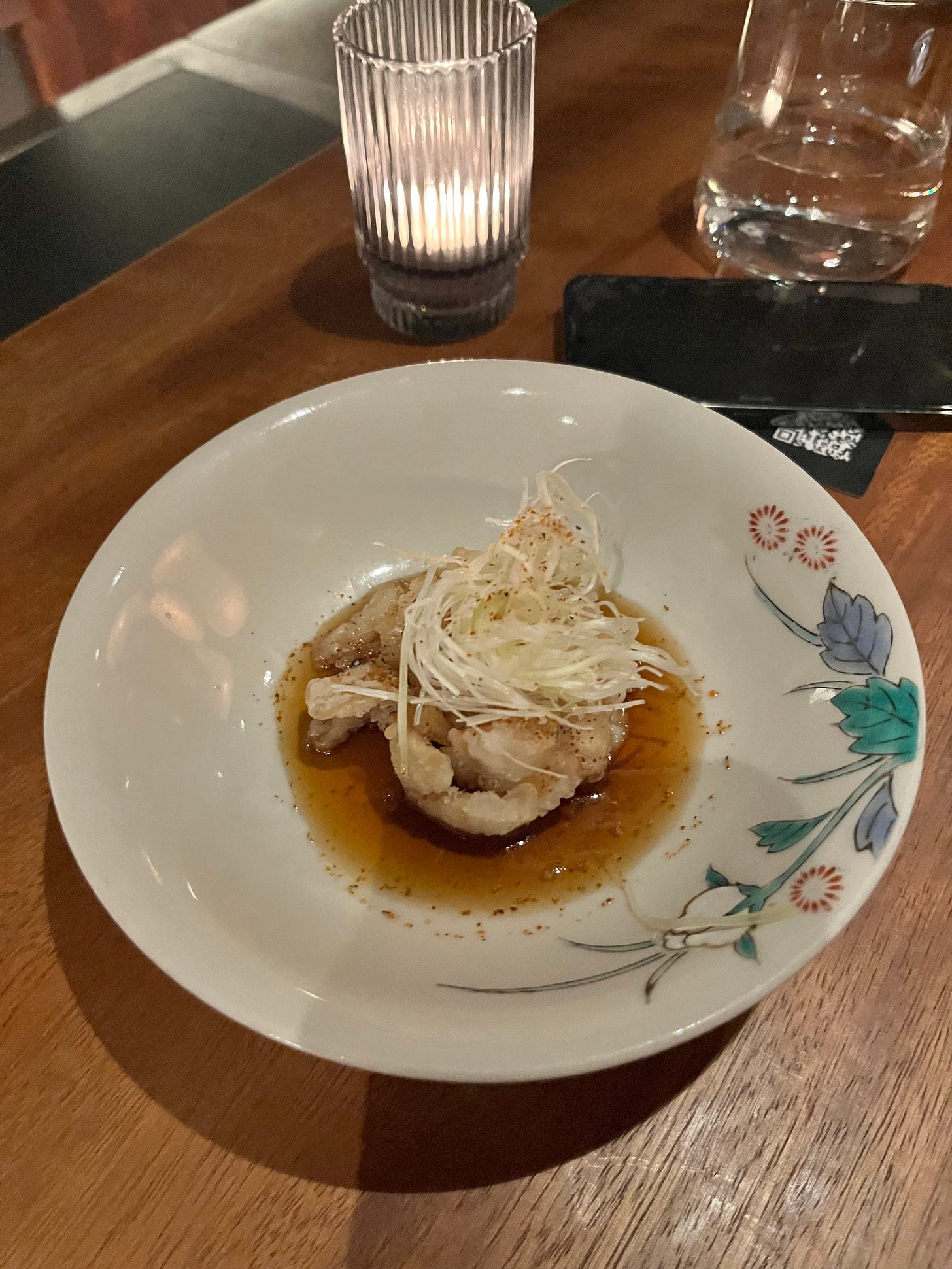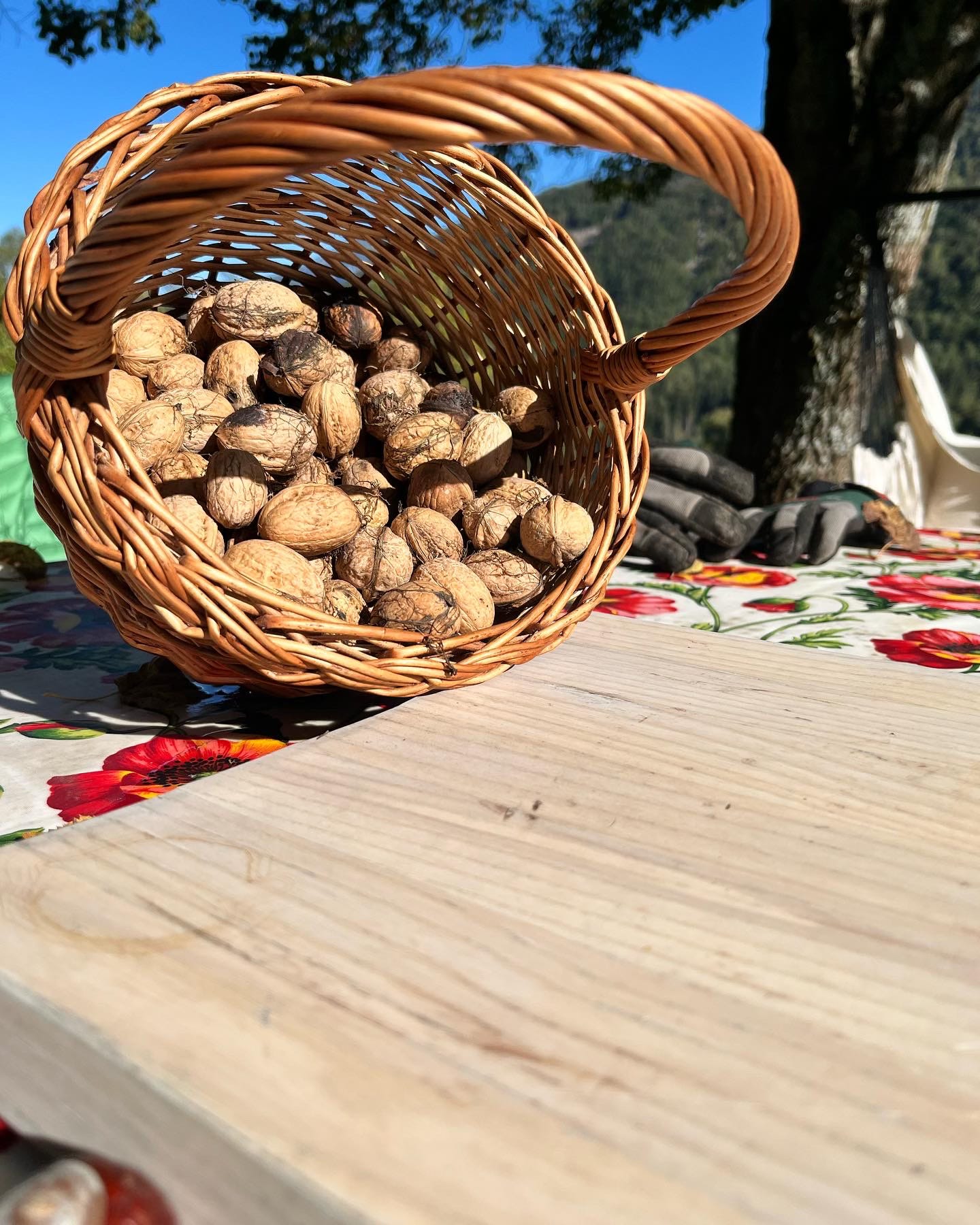The Invisible Kitchen: Hunting for Vegetarian Recipes in a Reinassance Portuguese Cookbook
Journey through Books: Domingos Rodrigues
On this festive day for all those who are in love, I share with you some of my love for Portuguese cuisine and antique cookbooks combined. Cardoons, eggplants, carrots, artichokes and asparagus are the protagonists of this article where we will be exploring together some vegetarian recipes from 1500.
Portuguese cuisine is characterised by an excessive (according to me and any modern dietary context) use of animal proteins: eggs by the dozen, meat, fish, and cheese.
It seems that there is almost no space or dish where vegetables can be eaten traditionally in Portuguese cuisine.
And it's a bit true: the cuisine that has established itself in restaurants, bars with kitchens, and cafés over the last hundred years clearly shows the desire of a poor country that was hungry to appear rich and eat meat and fish.
Vegetable dishes are my favourites among the dishes that I love most from the Portuguese domestic culinary tradition and that sometimes also appear in restaurants.
You will not find them in contemporary restaurants, tascas, or tavernas.
Similarly, you will not find them in vegetarian restaurants, vegan restaurants, bistros sprouting like mushrooms, or modern restaurants with small plates to share.
They are not found anywhere, with some rare exceptions. The act of “eating vegetables” is strange for the Portuguese, who have relegated it to an often mistreated, trite, and same-old side dish.
You have to dig into the books. Sometimes, they venture into forgotten villages to find something still alive in those traditions.
The recipes are there - ancient, more modern, traditional and fusion.
And precisely because they are rarities, they are even more precious recipes for me.
This year, we will begin a vegetal journey through the classic books of Portuguese cuisine in search of vegetarian and vegan recipes that have been present in this country for centuries.
Let's start with the second-oldest book of Portuguese gastronomy: the unrivalled Domingos Rodrigues's Arte da Cozinha. We will use the second edition (1732), which we cherish at home.
In chapter III, entitled “De Ervas”, Rodrigues lists plant-based recipes. In this first part, we will discover the “savoury” recipes from her cookbook, remembering that the distinction between sweet and savoury was more fluid in the past and that sugar or honey was an integral part of many “main” courses.
I chose one recipe for every vegetable he mentioned here for you, just to give you the flavour of this book and its cultural aspects.
Cardoons
The recipes mention cardoons, and I think, extrapolating, they can likely be prepared with both cardoons and artichokes.
Both of these vegetables are practically impossible to find in contemporary Portuguese gastronomy, and almost no restaurants, except some Italian ones, know how to serve and prepare these bitter vegetables that we love so much.
The selected recipe is boiled cardoons (cardos cozidos).
Rodrigues suggests briefly cleaning, peeling, and blanching the cardoons in hot water.
The blanched cardoons should then be sautéed with onion and herbs (parsley, coriander, bay leaves) until tender.
He sautés in manteiga de vaca, but you can replace it with olive oil.
Salt the sizzling cardoons in the soffritto and drown them in a measure (meia canada de leite feito de meio arratel. A canada is more or less 1.4 litres, while an arràtel corresponds to about 459 grams) of almond milk and six beaten egg yolks, with adubo (probably ground pepper, and spices to taste: thyme, perhaps paprika, perhaps a pinch of cinnamon).
The result is a sort of omelette, to be plated on slices of bread, with lemon juice sprinkled over everything before serving.
Eggplants
Another vegetable that is practically impossible to find except in Lebanese and Middle Eastern, Greek and Italian restaurants springing up like mushrooms in Lisbon. They are impossible to see in Portuguese cuisine: I challenge you to find them in tasks or even in trendy restaurants. I have a hard time finding good ones on the market!
This Renaissance book contains three eggplant recipes, a sign that they were not as rare as they are today on Portuguese tables.
The selected recipe calls for cutting aubergines into quarters and deep-frying them before adding water and salt and finishing cooking.
Once removed from the water and dried, they should be floured and placed in a pan without crowding them, with oil or butter, and a sauce made of vinegar diluted with honey (enough to make it pleasant to the palate) and ground cloves is poured over them.
Everything goes into the oven to brown and should be served hot, with a sprinkling of cinnamon.
Artichokes
There are only two recipes for artichokes in the book.
One is for stuffed artichokes: they are boiled and cleaned, and the heart is removed.
They are stuffed between each leaf with a filling of your choice and put to cook in the oven in a pan with oil or butter.
They are covered with egg yolk and diluted with a drop of broth. They are served on slices of bread with a sprinkling of cinnamon.
Asparagus
There is only one recipe for asparagus, which is understandable given the very short season for these green or white delicacies. The recipe does not specify the type, but I imagine it calls for the classic ones, not the thin, intense, and wild ones that must have dominated the poor tables of the country's peasants.
After boiling them (in three glasses of water, he says, perhaps to remove the bitter taste or the volatile substances that make the pee stink?), they are put in a soffrito of garlic, onion, bay leaves and parsley, sprinkled with lemon and covered with beaten egg yolks.
Once cold, this mixture will fill a sort of"pasqualina" cake with a well-worked dough like pasta matta: butter, sugar, flour and white wine.
The whole thing goes into the oven to cook.
Rodrigues says you can fill cakes with white pumpkin, turnips, chicory, and artichokes.
Carrots
The recipe I chose is a carrot soup, cenouras de potagem.
Once blanched, the carrots are cut into slices and sautéed in butter and oil with onion.
After that, they are added to boiling water with salt, vinegar or lemon, bay leaves, parsley, coriander, and honey.
A little broth and toasted flour are used to thicken the liquid. If desired, a fried egg is added to the top before serving.
Escabeche
Fish immediately comes to mind when thinking of Portugal - or Spain - and escabeche.
But you can also use the sauce for vegetables (fried in batter, as you would with fish).
Rodrigues suggests the recipe: boil a little vinegar diluted with water, salt, bay leaves, lemon and lime juice, a little olive oil, grated ginger, pepper, and cloves in a saucepan.
Before using it on top of the fried ingredients to soak them, let it cool.
Soups and Creams
Most of these preparations are rich creams with lots of eggs. However, there is also a recipe with almonds.
Almond cream soup is prepared by pouring half a canada of milk (a canada is more or less 1.4 litres), half an arràtel of sugar (an arràtel corresponds to about 459 grams), four onças of almonds (about 114 grams) chopped very finely and a quarter of butter (about 250 grams, but I'm not too sure).
Blend everything and let it thicken over low heat.
When it is thickened, it should be put in an oven-proof pan and browned.
Condiments
Achar is a typical preserve of the Indo-Portuguese cuisine of Goa, Daman and Diu, formerly belonging to the Portuguese state of India. In the past, the word achar generically meant "pickles".
Domingo Rodrigues presents a recipe for mussels in achar.
At the end of the recipe, he says that the same can be used to preserve quinces, onions, cabbage (couve Murciana), aubergines, cucumbers, and carrots.
The latter, however, requires a previous passage in salmoura, or brine, for three days, from which they are extracted to be then put in vinegar.
The procedure involves boiling strong vinegar and adding a coarsely chopped cinnamon stick, pepper, ginger, mustard, and nutmeg.
The ingredients to be transformed into achar are placed in a jar in layers, covered with vinegar, and sprinkled with pepper, cloves, salt, and oil.
I am not a recipe developer or a food stylist, so I limit myself to studying the books and presenting them in a palatable language for you.
However, I secretly want to start working on these ancient books to bring their recipes back to life and adapt them to modern times.
So, if you are interested in working on a book project for ancient Portuguese vegetarian recipes adapted to this century, send me a message!
I am busy with a lot of background research and translation into English, as well as capturing cultural, anthropological and societal context cues for optimising the recipes: as you saw here above, in their “original” format, they are not helpful for a quick, easy and palatable home or restaurant reproduction.
Suggested readings
How couldn’t I suggest to you the marvellous world of
- a plunge in a completely new and unchartered territory (pun intended)? Here it is:’s Letters from Japan is a true gem as well:
















Hi,
those vegs are also eaten in Spain. Eggplant is widely eaten. Not much cardos, except Navarra. But we can find them during the season in many traditional markets.
Kind regards.
Lovely, I am definitely in love with Portuguese food. And I would never replace manteiga da vaca with olive oil (as much as I adore olive oil).